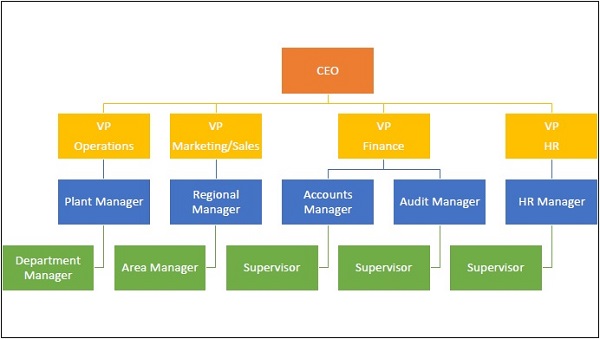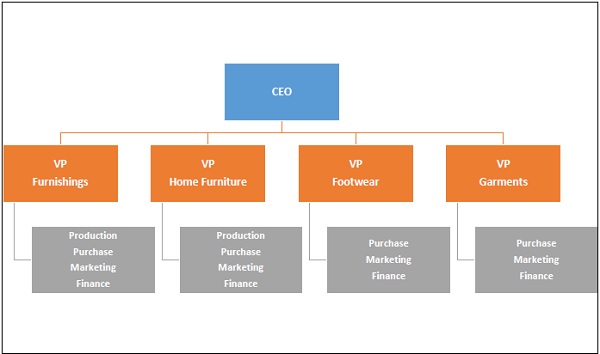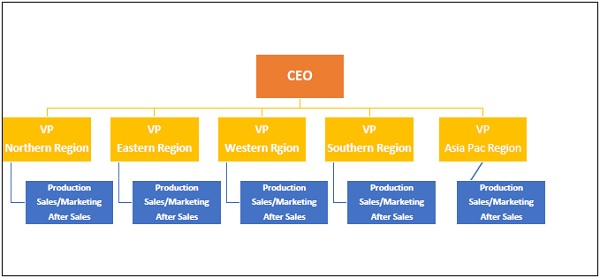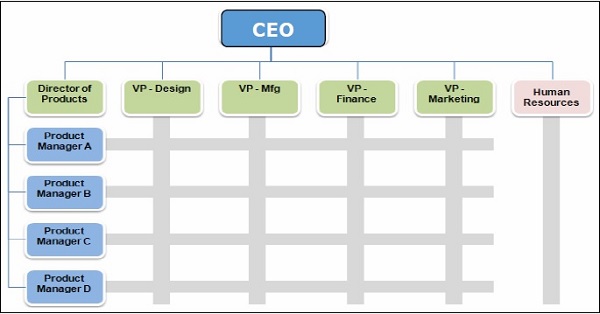
- Management Principles - Home
- Management - Overview
- Management - Role Of Managers
- The P-O-L-C Framework
- Management - Ecosystem
- Management - Environment
- Management - Factors Affecting
- Management - Organization
- Management - Leadership Styles
- Management - Framework
- Mission,Vision and Values
- Personalty and Attitude
- Work Attitude and Behaviour
- Decision Making
- Decision Making Nature Significance
- Factors Affecting Decision Making
- Decision Making - Styles
- Decision Making - Tools
- Management - Planning
- Planning - Introduction
- Types Of Plans
- The Planning Environment
- Organizational Structure
- Importance Of Organizing
- Principles Of Organizing
- Organizational Structure
- Organizational Process
- Change Management
- Organizational Change
- Organizational Change Factors
- Organizational Change Management
- Globalization and Its Effect
- Multinational Organizations
- Global Ecosystem and its Impact
- Management Useful Resources
- Management - Quick Guide
- Management - Useful Resources
- Management - Discussion
Organizational Structure
An organization is a social unit of individuals that is designed and managed to achieve collective goals. As such organizations are open systems that are greatly affected by the environment they operate in. Every organization has its own typical management structure that defines and governs the relationships between the various employees, the tasks that they perform, and the roles, responsibilities and authority provided to carry out different tasks.
An organization that is well structured achieves effective coordination, as the structure delineates formal communication channels, and describes how separate actions of individuals are linked together.
Organizational structure defines the manner in which the roles, power, authority, and responsibilities are assigned and governed, and depicts how information flows between the different levels of hierarchy in an organization.
The structure an organization designs depends greatly on its objectives and the strategy it adopts in achieving those objectives.
An organizational chart is the visual representation of this vertical structure. It is therefore very important for an organization to take utmost care while creating the organizational structure. The structure should clearly determine the reporting relationships and the flow of authority as this will support good communication resulting in efficient and effective work process flow.
Common Organization Structures
Managements need to seriously consider how they wish to structure the organization. Some of the critical factors that need to be considered are −
- The size of the organization
- Nature of the business
- The objectives and the business strategy to achieve them
- The organization environment
Functional Organization Structure
The functional structure is the most common model found in most organizations. Organizations with such a structure are divided into smaller groups based on specialized functional areas, such as operations, finance, marketing, Human Resources, IT, etc.

The organizations top management team consists of several functional heads (such as the VP Operations, VP Sales/Marketing). Communication generally occurs within each functional department and is communicated across departments through the department heads.
This structure provides greater operational efficiency as employees are functionally grouped based on expertise and shared functions performed. It allows increased specialization as each group of specialists can operate independently.
In spite of the above benefits there are some issues that arise with this structure. When different functional areas turn into silos they focus only on their area of responsibility and do not support other functional departments. Also expertise is limited to a single functional area allowing limited scope for learning and growth.
Product Organizational Structure
This is another commonly used structure, where organizations are organized by a specific product type. Each product category is considered a separate unit and falls within the reporting structure of an executive who oversees everything related to that particular product line. For example, in a retail business the structure would be grouped according to product lines.

Organization structured by product category facilitates autonomy by creating completely separate processes from other product lines within the organization. It promotes depth of understanding within a particular product area and also promotes innovation. It enables clear focus with accountability for program results.
As with every model, this model also has a few downsides like requirement of strong skills specializing in the particular product. It could lead to functional duplication and potential loss of control; each product group becomes a heterogeneous unit in itself.
Geographic Organizational Structure
Organizations that cover a span of geographic regions structure the company according to the geographic regions they operate in. This is typically found in organizations that go beyond a city or state limit and may have customers all across the country or across the world.

It brings together employees from different functional specialties and allows geographical division. The organization responds more quickly and efficiently to market needs, and focuses efforts solely on the objectives of each business unit, increasing results.
Though this structure increases efficiency within each business unit, it reduces the overall efficiency of the organization, since geographical divisions duplicate both activities and infrastructure. Another main challenge with this model is that it tends to be resource intensive as it is spread across and also leads to duplication of processes and efforts.
Matrix Organizational Structure
A matrix structure is organized to manage multiple dimensions. It provides for reporting levels both horizontally as well as vertically and uses cross-functional teams to contribute to functional expertise. As such employees may belong to a particular functional group but may contribute to a team that supports another program.

This type of structure brings together employees and managers across departments to work toward accomplishing common organizational objectives. It leads to efficient information exchange and flow as departments work closely together and communicate with each other frequently to solve issues.
This structure promotes motivation among employees and encourages a democratic management style where inputs from team members are sought before managers make decisions.
However, the matrix structure often increases the internal complexity in organizations. As reporting is not limited to a single supervisor, employees tend to get confused as to who their direct supervisor is and whose direction to follow. Such dual authority and communication leads to communication gaps, and division among employees and managers.